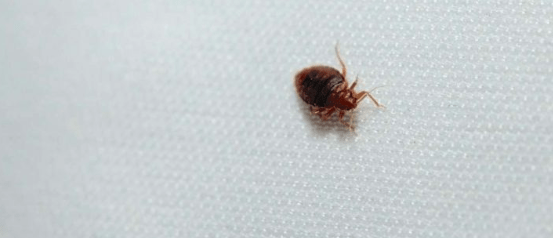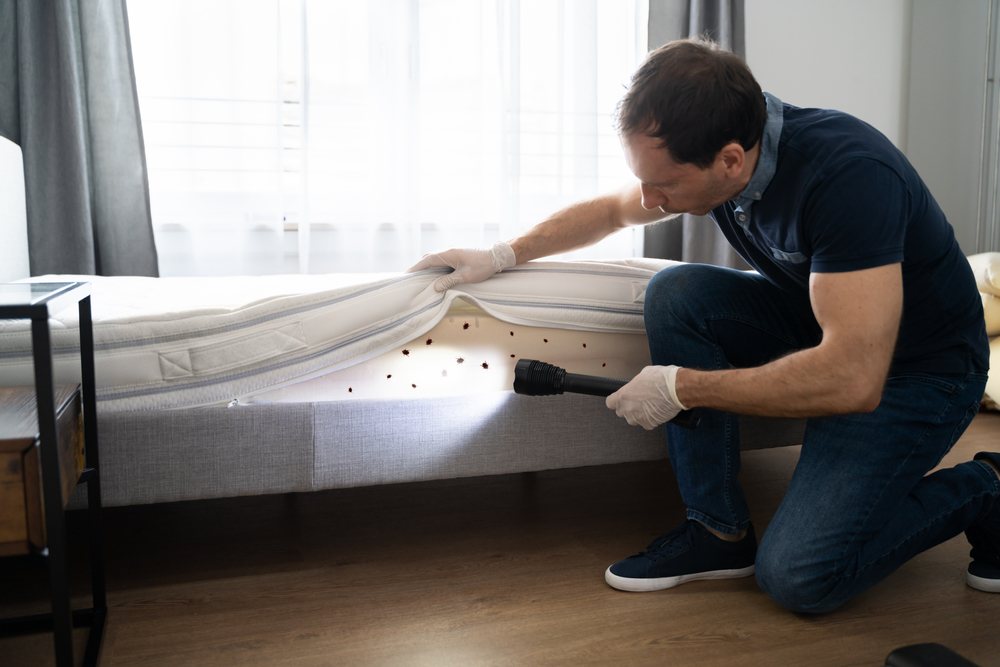Bed bugs are notorious little creatures that can truly have an impact on the quality of your life. They’re difficult to deal with, hard to live with, and sometimes downright impossible to get rid of.
They’re currently spreading across the US, with the most affected areas being Washington D.C., Baltimore, Chicago, and LA. They’re a genuine cause of concern, especially so if you have pets and are worried about their well being. Cats and dogs are already severely affected by parasites like fleas and worms, so, naturally, you’d be concerned about your pets and bed bugs.
If you think you have a bed bug infestation on hand, below, you’ll find the answers to some of the most common questions regarding bed bugs and pets.
What Are Bed Bugs?
As a pet owner, you’ve likely had to deal with your fair share of fleas and ticks. Being so used to them, it’s easy to misinterpret a bed bugs with other pests, but they’re very distinct creatures that need to be handled in different ways.
You can keep your pets safe from fleas and ticks with topical treatments and specialized collars, but these will have no effect on a bed bug. This is why it’s important to know what a bed bug is and how you can identify it.

Just like fleas and ticks, bed bugs are small insects that feed on the blood of mammals, but their appearance is very different. They’re about the size of an apple seed, much larger than the common flea, and they’re generally reddish-brown.
While fleas move around by hopping, bed bugs tend to crawl around. Still, they’re very mobile and can be hard to catch.
Their appearance can be similar to some ticks. You can distinguish the two by noticing how they feed. Ticks bury their heads in the victim’s flesh when feeding, and bed bugs don’t. As opposed to ticks, bed bugs also have two antennae on their head.
Can Bed Bugs Bite Cats?
Bed bugs usually prefer biting humans because it’s easier for them to move around the skin without being detected. They dislike fur and cannot really cling to it, so they’ll typically try to feed off of humans if possible, and when that happens, bed bugs can cause serious symptoms.
With this in mind, it’s still possible for them to feed off of other mammals if there aren’t any fur-free humans nearby. That means that your cat can suffer from bed bug bites.

Because they have a tough time moving around through fur, if they bite your cat, it will generally be on more exposed skin — on the cat’s belly or around their snout and paws. Focus on these areas if you’re looking for signs of bed bug bites on your cat.
Can They Bite Dogs?
Bed bugs can bite dogs as well and will do so if they cannot detect the presence of a sleeping human. Again, due to their dislike of fur, bed bugs will try to avoid dogs with a thicker coat and will go for the more exposed areas.
These little creatures detect their host by tracking the carbon dioxide and heat coming from a sleeping host.

Bed bugs generally wait around for the host to fall asleep before they start feeding. While they’re feeding, they inject the host with anticoagulants and anesthetics, ensuring that their bite won’t be noticed and cause the host to wake up.
Your dog will only be able to notice the bite around 10 minutes later when the anesthetic wears off, and by then, the bug will be long gone.
Do Bed Bugs Live in My Pet’s Fur?
Bed bugs prefer living in dark, secure places where there isn’t a lot of commotion, so their nests and hiding places will never be found on a person or animal. Unlike fleas and lice which live on their hosts, bed bugs only approach the host during feeding time, then go back to their shelter that’s secured away.
It’s precisely because of this habit that they’re called “bed” bugs. They cannot cling to the hairs or skin of the host, and they don’t like moving around a lot because they can be detected, so they usually hide close to the host’s sleeping area.
You’ll find them in beds, mattresses, behind the headboard, inside furniture, and in other similar locations. While they don’t live on your pets, they can live in their beds, so be sure to check them if you suspect an infestation.
Can My Pets Carry Bed Bugs?
It’s highly unlikely that your pet will carry bed bugs, but it’s still possible. Since hanging around in your cat’s or dog’s fur is both difficult and dangerous for them, you’re more likely to find them in your pet’s collar or leash.
If your pets hang around infested areas a lot, if you send them to a kennel that has bed bugs, or if your neighbor has them, it’s possible for a bed bug to be accidentally stuck to their fur and brought into your home.
But this is a highly unlikely scenario. The possibility is much greater for you to carry bed bugs inside your clothing, bags, or car.
Do Bed Bugs Transfer Diseases to Cats and Dogs?
Although fleas and ticks are known carriers of numerous diseases, this isn’t the case with bed bugs. So far, there hasn’t been a recorded case of bed bugs transferring any diseases to pets.
Of course, this doesn’t mean that bed bug bites are completely harmless. You or your pets could have an allergic reaction, so it’s important to treat these bites immediately.
Besides, bed bug bites are notoriously itchy, and your pet could have major problems with scratching after them. If they scratch so much that they bleed, or create open wounds, they can become susceptible to infections.
How to Detect a Bed Bug Infestation
It can be difficult detecting a bed bug infestation before it’s too late. You’ll need to look for signs of bed bug presence such as bite marks or nests under the furniture.

Since adult bed bugs are very mobile, it would be easier to detect their eggs or droppings. The eggs will be much smaller and usually white in color, almost translucent, and the droppings will appear as small, dark red/brown marks.
You’ll need to inspect almost every inch of your house, apartment, or hotel room, if you suspect a bed bug infestation. Be sure to check:
- Pet beds
- Mattresses
- Headboards
- Closets
- Behind the walls
- Furniture
As mentioned, bed bugs like dark, warm places so their nests can be found almost anywhere.
How to Keep Your Pets Safe from Bed Bugs
There are a couple of things you can do to protect your pets from bed bugs. You will need to vacuum your house often, focusing on the areas around your pet’s bed and toys.
Vacuuming will remove dust and dirt that allows the bed bugs to move around with ease, and it will also pick up the bed bugs themselves. Just be sure to empty your vacuum cleaner bag outside of your home to ensure that the bed bugs don’t escape from it.
Secondly, if you suspect that your pet’s been exposed to bed bugs outside of your home, be sure to brush them thoroughly before letting them back in.
Can Bed Bug Treatments Harm My Pets?
There’s a wide variety of bed bug treatments; some are safe for your pets, others are not. If you opt for chemical treatments, it’s best to stay on the safe side and keep your pets away for a while.
Bed bugs dislike essential oils, so many use them as a DIY treatment to get rid of the infestation. If you decide to do so, you need to be aware that some essential oils can be harmful to your pets, and you should keep them away while you’re using them.
Bed bugs can be annoying and can cost a lot of money to get rid of. Fortunately, your pets aren’t likely to suffer many consequences because of them. Bed bugs mostly target humans, so at least your pets will be relatively safe in case of an infestation.





